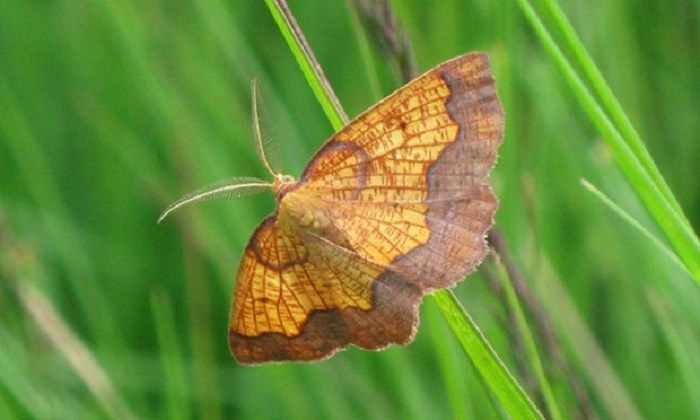Rare moth faces extinction at its last site in England

The centimetre-wide moths rely on the creeping willow bush to feed their caterpillars but an accidental heath fire destroyed a key area of the bushes in 2009.
Another factor is likely to be increased grazing by sheep. This is intended to preserve the heathland by preventing the growth of trees and tall shrubs but appears to have unwittingly damaged the fortunes of a rare species that the heath management is ultimately designed to protect.
The stories you need to read, in one handy email
Read more
Female dark bordered beauty moths prefer to lay their eggs on large, robust creeping willows in July, so the shortening or loss of the plants by grazing means there are fewer good sites for egg laying and a subsequent decline in moth numbers. The sheep may even be eating the moth eggs as they graze, as the eggs stay on the plant until late spring before they hatch.
“The dark bordered beauty is a very special and charismatic moth, which has been observed and admired at Strensall Common for well over a century,” said Terry Crawford, at York University and one of the research team.
“It has long been part of the natural history heritage of England and of Yorkshire,” he said. “Because of the loss of populations elsewhere in England, the loss of the population at Strensall Common would mean extinction of the moth in England as a whole.” The moth is known at three sites in Scotland.
Peter Mayhew, another York University scientist, said the new study indicated how overall management plans for nature reserves can conflict with the needs of specific species.
Action is now being taken to try to save the moth, said Sam Ellis, at the charity Butterfly Conservation. “As a short-term measure we are trying to boost the numbers and size of creeping willow plants on Strensall Common by planting out willows grown from local seed, and protecting them from sheep grazing [with fences]. Hopefully this will help the moth population bounce back from its very low current level.”
“Ultimately we may need to modify the grazing regime at Strensall Common to make it more sustainable for the dark bordered beauty,” he said. “Further ahead, other populations need to be established outside of Strensall to secure the moth’s long-term future in England.”















































